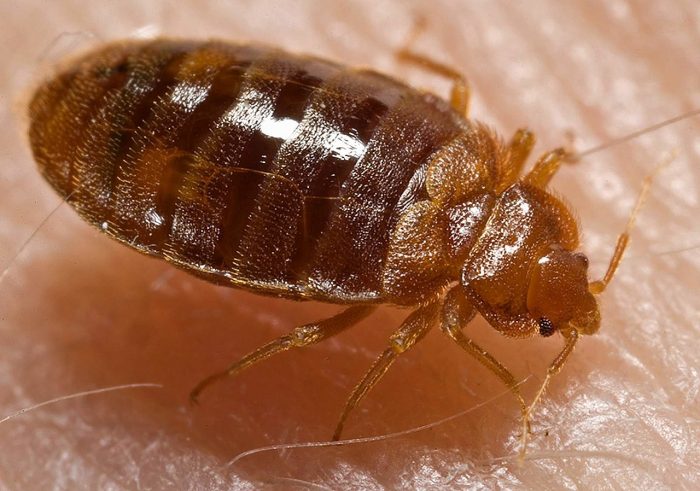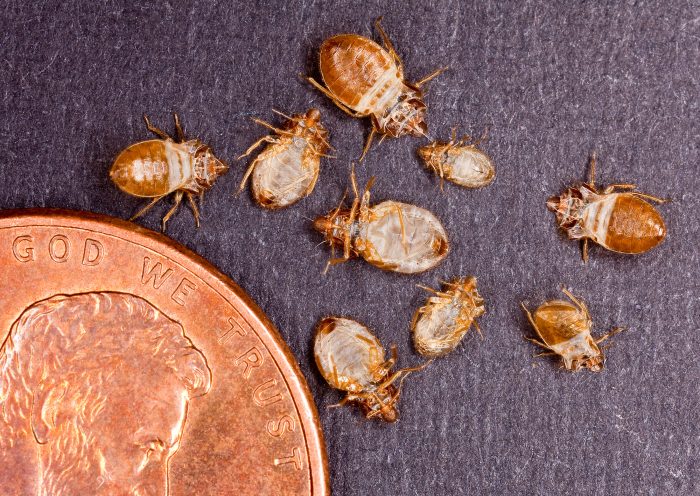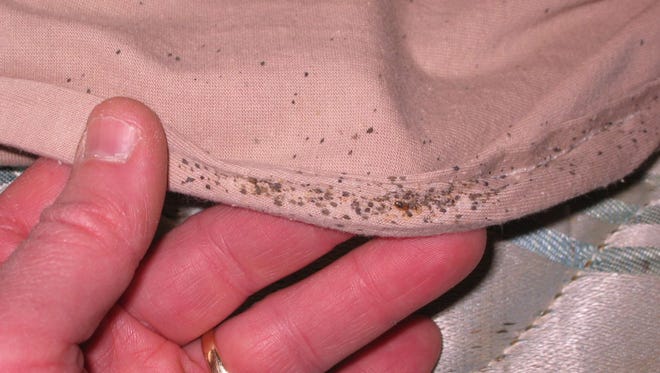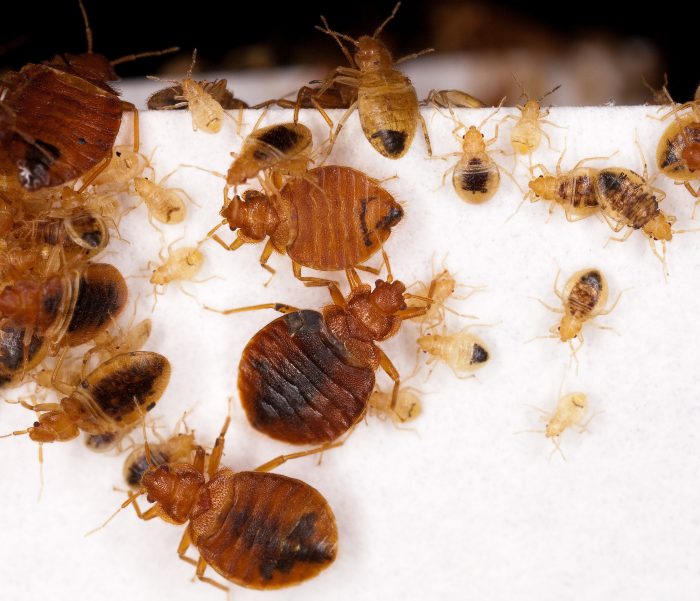As if we didn’t have enough to worry about
After three years at No. 2, Washington, D.C. has finally surpassed longtime champ Baltimore, Maryland, and been named most bed bug-infested city in the United States by the Orkin Pest Control company.
This dubious distinction comes on the heels of news reports from Edinboro, Pennsylvania, where police are searching for whomever released live bed bugs in the men’s fitting room of the Edinboro Walmart. A pill bottle containing live bed bugs was found in the pocket of an unsold boy’s jacket in the store and more bed bugs were later discovered crawling around the men’s fitting room by a pest control company.
These reports raised some questions—How? Why? What is wrong with people?
The Torch turned to Natural History Museum Entomology Collections Manager Floyd Shockley and U.S.D.A. Entomologist Tom Henry, who is based at NMNH, to learn more about bed bugs and understand just how someone might go about collecting these tiny and secretive insects.

This 2006 photograph depicts an oblique-dorsal view of a bed bug nymph (Cimex lectularius) as it was in the process of ingesting a blood meal from the arm of a “voluntary” human host. The common bed bug is found worldwide.
Do you suppose someone raised these bed bugs or collected them from an infested bed or hotel room?
Shockley: Two kinds of labs that I know of raise bed bugs. The first is a lab where people study the biology or physiology of blood-feeding insects, say the entomology department at a university. The second would be urban and integrated pest management labs that are looking at new ways of control. They would need large numbers of bed bugs that they can test in different ways with different pesticides, in order to find an effective control.

A penny provides a sense of scale to the size of bed bug skins collected for analysis by ARS scientists in Beltsville, Maryland, (Photo by Steven Ausman, USDA)
To rear a bed bug colony requires specialized equipment. You must draw blood which is the only food they eat. A lot of labs use animal blood, some use human blood. They preferentially feed on human blood, but will feed on other blood if that’s all that is available.
Labs such as this have a specialized process by which they insert the blood into little packets of paraffin wax film. This gives the bed bugs the physical stimulus of touching something hard, piercing through it and drawing blood. If you just put a drop of blood down, they may or may not feed on it.
I think that these bed bugs were probably collected and not held for too long and then for some reason that defies logic, someone decided to drop them off at the Walmart. It is an unusual habitat for them, as they tend to stick to places where humans sleep, so they have ready access to us at night. Bed bugs can go a long time without feeding.
What type of mouthparts do bed bugs have?
Henry: They have what we call piercing sucking mouthparts, a proboscis like a straw with an outer sheath called a labium and an inner stylus. The sheath is pushed back, and the stylus is inserted into the skin to suck blood. As with mosquitoes, female bed bugs, require a blood meal for their eggs to develop. That is why mosquitoes and bed bugs are so voracious. In the case of mosquitoes, only the adult females do the biting, but with bed bugs, males, females and immatures all feed.
How do bed bugs get around?
Henry. At night they crawl out from crevasses and other dark places to feed. Bed bugs have only short wing pads and, thus, are always flightless.
To move to new places, they must be transported. Let’s say that bed bugs are in one house in a neighborhood. To get to another home two houses down, say, they must hitch a ride on infested clothing, luggage, and the like.
Or, let’s say you stay in a hotel or motel and it is infested. It is possible for bed bugs to crawl into an open suitcase to hide. You close your suitcase, reopen it at home, and you now have a small infestation if you aren’t careful. This is something that is happening with more frequency. It is always a good idea to generally check your room for bed bugs.

The black spotting on this blanket are fecal marks left by bed bugs. Such spotting is a tell-tale sign of a bed bug infestation. (Photo by M.F. Potter via USA Today)
You can have an infestation of bed bugs for a long time before you realize it. Maybe you have a few itches or scratches, maybe have a little red welt on your leg or on your arm that may be mistaken for a mosquito bite or some other irritation.
If you suspect you have bed bugs, the best way to find out is to turn on the lights in the middle of the night, pull back your sheets, and look around your bed clothing and linens. That’s when they will be out.
In the daytime they generally are secretive and hide in the cracks and crevasses around baseboards, headboards and under the mattresses and other such places.
Do they spread disease as mosquitoes do?
Henry: No. As far as we know bedbugs are not known to transmit diseases. That is one fortunate thing about them.

Adult and immature bed bugs. (Photo by Steven Ausman, USDA)
Did bedbugs evolve with humans?
Henry: There’s a lot of speculation, even with the human bed bug Cimex lectularius, that’s the common one we have here. Bed bug species clearly originated feeding on other animals. It is thought that the human bed bug originally fed on bats in caves, and our ancestors living in caves acquired them and brought them into their dwellings. Except for two species associated with humans, all other bed bugs feed on bats and birds.
Would it be difficult to catch live bed bugs in a bottle?
Shockley: They are often found in a hotel room say, clustered together, so it would be easy to just take a pill bottle, put it behind them and get them to drop in. They usually cluster in the folds of a mattress or box spring, or if the bed’s got an overhanging pillow-top, they will often be clustered along its seam.
How do you get rid of bed bugs?
Shockley: Heat treatment is the most effective, that’s assuming you can’t just discard whatever it is. Run your clothes through the wash and then in the dryer on high heat for two or three cycles. Pesticides were once effective but because of the way bedbugs reproduce, they develop resistance very quickly to pesticides.
You can also freeze them but usually people don’t have a freezer in their home that will hold a lot of clothes. Believe it or not bed bugs are pretty resilient insects, so you have to freeze them for days and perhaps even a week to kill them.
For a room in your house an over-the-counter application from a drugstore can be used or call an exterminator.
(Ed. note: KILL THEM WITH FIRE.)
Posted: 3 February 2020
-
Categories:
Feature Stories , Natural History Museum , Science and Nature







